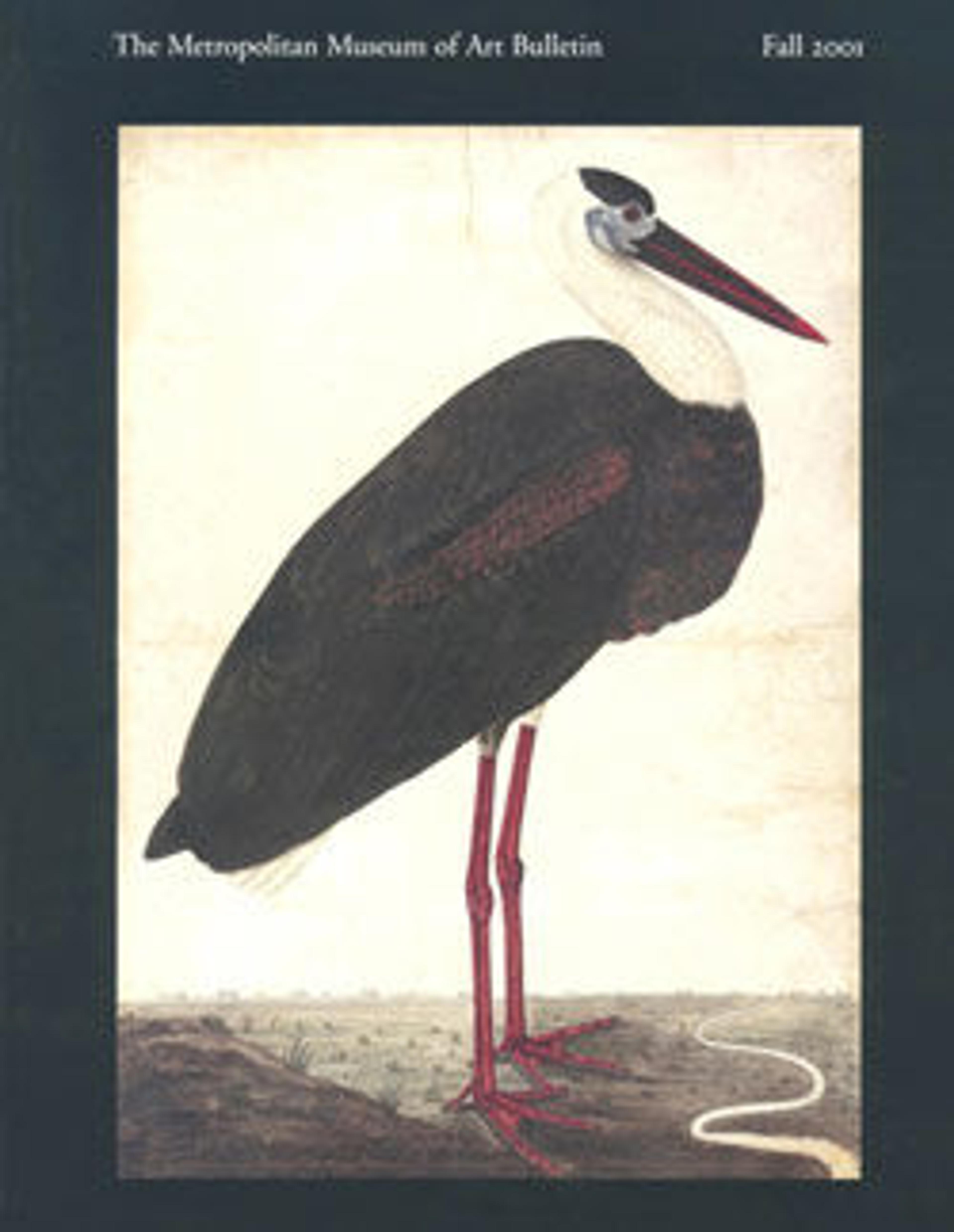Cream pitcher
Glass, elaborately cut or engraved in a variety of patterns based on English Regency styles, was in vogue for fine tableware during the early nineteenth century. This elegant cream pitcher and its related sugar bowl reveal a sophisticated alternative to cutting: the manipulation of the clear, colorless glass in its molten state. The vessels combine multiple decorative techniques characteristic of three New England factories that were producing stylish wares during the 1820s and 1830s. The predominant feature is the tooled horizontal ribbing on a second gather, or applied layer, of glass, which was drawn upward into the ribs with a sharp tool to create a swag pattern. This striking ornamentation is repeated on the domed cover of the sugar bowl and again on the cover's finial. The bold, classic footed shapes and the rounded hollow stems are hallmarks of all three Massachusetts firms. Although lacking the refractive qualities of their cut-glass counterparts, the cream pitcher and sugar bowl are highly lustrous in their surfaces and sophisticated in their decorative techniques.
Artwork Details
- Title:Cream pitcher
- Maker:Attributed to New England Glass Company (American, East Cambridge, Massachusetts, 1818–1888)
- Maker:Possibly South Boston Flint Glass Works
- Date:1815–35
- Geography:Made in Massachusetts, United States
- Culture:American
- Medium:Free-blown glass with applied decoration
- Dimensions:6 1/16 x 5 9/16 in. (15.4 x 14.1 cm)
- Credit Line:Gift of Mr. and Mrs. Robert Keller, in memory of Gretchen Keller, 2000
- Object Number:2000.509.1
- Curatorial Department: The American Wing
More Artwork
Research Resources
The Met provides unparalleled resources for research and welcomes an international community of students and scholars. The Met's Open Access API is where creators and researchers can connect to the The Met collection. Open Access data and public domain images are available for unrestricted commercial and noncommercial use without permission or fee.
To request images under copyright and other restrictions, please use this Image Request form.
Feedback
We continue to research and examine historical and cultural context for objects in The Met collection. If you have comments or questions about this object record, please contact us using the form below. The Museum looks forward to receiving your comments.
